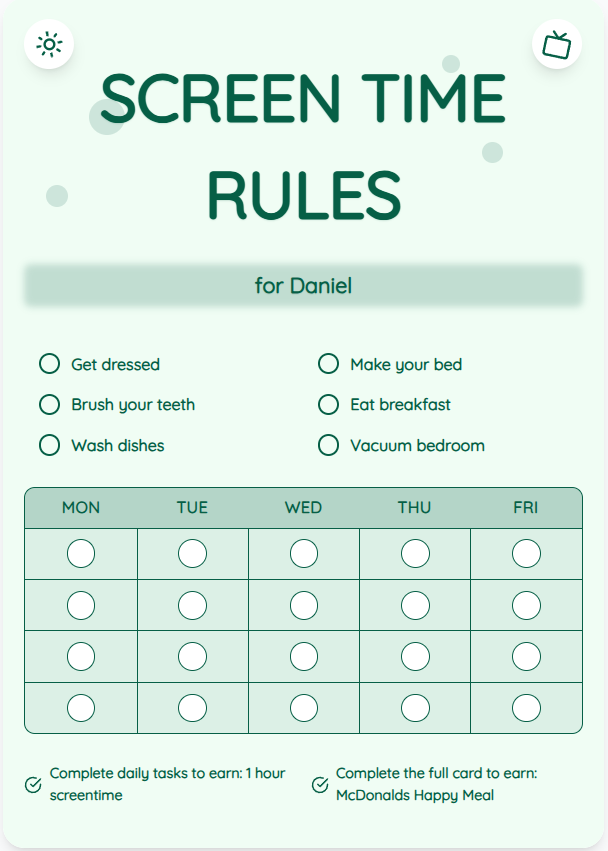The Ultimate Guide to Managing Screen Time on Laptops for Kids
As a parent, balancing your child's screen time on laptops can be challenging. However, with the right strategies and tools like screen time charts, you can effectively manage and limit their screen time usage. In this comprehensive guide, we'll explore actionable tips and advice to help you set healthy screen time limits for your children aged 2-12.
See What Your Screen Time Chart Will Look Like
Here's an example of a beautiful, customizable screen time rules chart you can create for your family

Understanding the Importance of Setting Screen Time Limits
Excessive screen time can have negative impacts on children's physical health, mental well-being, and overall development. By setting limits, you can promote healthier habits and ensure a well-rounded childhood. Screen time charts are valuable tools that visually represent and track your child's screen time usage, making it easier to manage.
Practical Tips for Implementing Screen Time Limits
1. Establish clear rules and boundaries regarding screen time. 2. Use screen time charts to create a visual schedule for your child. 3. Encourage alternative activities like outdoor play, reading, or creative arts. 4. Lead by example by limiting your own screen time when around your child.
Put These Tips Into Action
Create a custom chart to implement these strategies with your child
Utilizing Screen Time Charts Effectively
Screen time charts from ScreenTimeRules.com offer customizable templates that allow you to set specific time limits for different activities. By involving your child in the process and making the chart visible, you can promote accountability and self-regulation.
Monitoring and Adjusting Screen Time Limits
Regularly review your child's screen time usage and make adjustments as needed. Be flexible while maintaining consistency to adapt to your child's changing needs and interests. Communicate openly with your child about the importance of balanced screen time.
Practical Tips for Success
- Set a daily screen time limit that suits your child's age and needs.
- Encourage breaks during screen time sessions for physical activity.
- Use positive reinforcement to reward adherence to screen time limits.
- Create a designated screen-free zone in your home.
Frequently Asked Questions
How can I introduce screen time limits without facing resistance from my child?
Start by explaining the reasons behind setting limits and involve your child in creating the rules. Offer incentives for following the limits and gradually increase their understanding of the importance of balanced screen time.
Are there any recommended screen time limits for different age groups?
While guidelines vary, experts generally suggest no more than 1 hour of high-quality screen time per day for children aged 2-5, and 2 hours for older children. However, individual needs and activities should be considered when setting limits.
How do screen time charts help in managing screen time effectively?
Screen time charts provide a visual representation of allotted screen time, making it easier for both parents and children to track usage. They promote self-regulation, accountability, and structure in screen time management.
By implementing these practical tips and utilizing screen time charts effectively, you can establish healthy screen time habits for your child while fostering family harmony. Visit ScreenTimeRules.com to create personalized screen time charts and start managing your child's screen time today!
Ready to Transform Your Family's Screen Time?
Join thousands of parents who have successfully managed screen time with our customizable charts.
